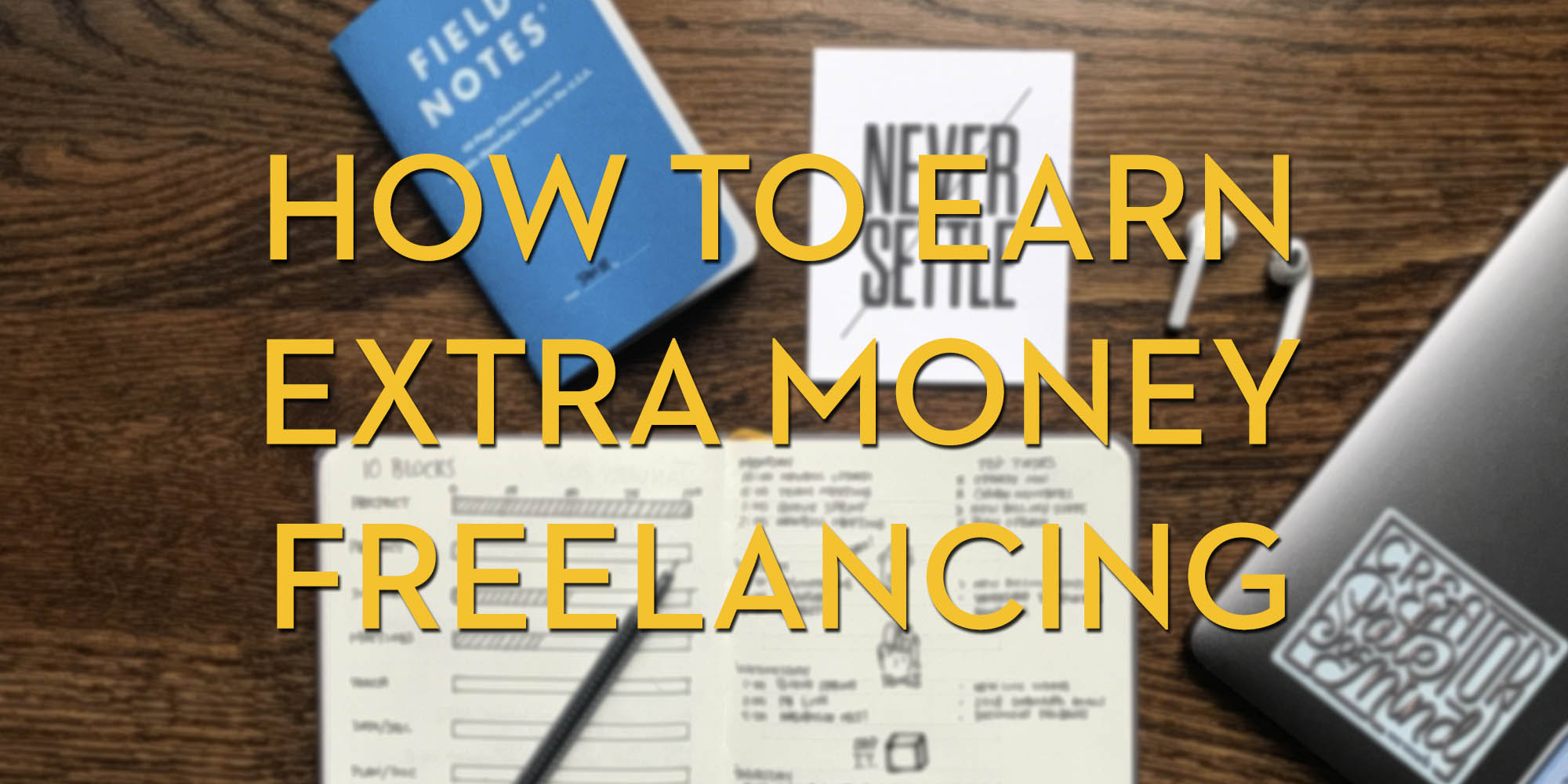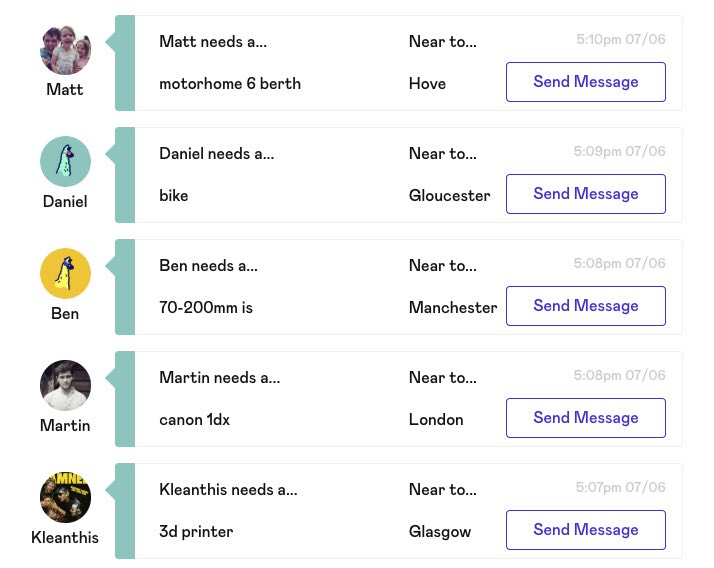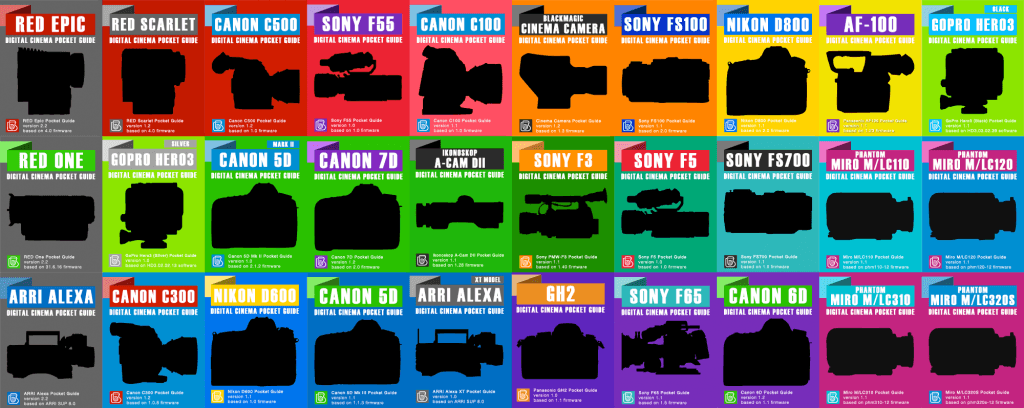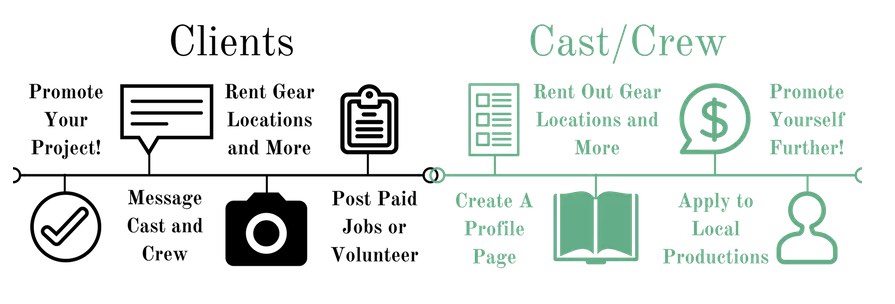How to Earn Extra Money on the side as a Freelance Creative

These days it seems like everyone needs a ‘side hustle’ just to survive, but when you’re starting out as a freelancer having one could be what makes all the difference between being able to stay in the game long enough to build the career of your dreams, or having to take a different job, because financially freelancing was unsustainable.
I’ve been a freelancer for over 10 years now and I’ve never had a salaried job in that time.
Personally I love freelancing. I get to work with a variety of clients, work on different kinds of projects and develop my own ideas and creative ambitions. Plus I most often work from so I have zero commute and get to spend a ton of extra time with my family.
I definitely wouldn’t want it any other way.
But freelancing isn’t for everyone. Some people thrive in a structured environment and really feed on office banter and the daily social interaction that comes with an in-house role.
Working within a company comes with huge benefits; greater job stability, a clearer career ladder to climb, not to mention holiday pay, sick leave and mentors to learn from.
So if you’re contemplating freelancing, or deciding whether to tough it out if it’s not going quite so well right now then you need to decide if freelancing really is for you and develop a plan to make it work for you.
In this post I’m going to suggest a bunch of different ways to earn a little extra money on the side, which I hope will help you sustain and maintain your freelance creative career.
Being freelance means running your own business even if you’re only doing one thing. You are your business, so before we dive into the post, it would make sense to point you in the direction of my ebook, How To Be A Freelance Creative, which is pretty much everything I know about building a successful freelance career.
Topics I cover include:
- Handling your money and making more it
- Building fruitful relationships with clients and creatives
- Getting the kind of work you really want
- Handling unemployment and making freelance life work
- Networking, negotiations and getting new work
Plus a whole lot more!
In a 100 pages I share every piece of useful advice I’ve ever received, all the lessons I’ve ever learned, all the mistakes I’ve ever made and every technique that has ever helped me to sustain and grow my freelance creative career over the past 10 years and counting.
Over the years I’ve heard from many readers who found the book helpful, so I hope you will too!
Read How To Be A Freelance Creative here
How to choose the right kind of work for a second income
Having a side-hustle that’s helping you earning a little extra money, outside of your ‘day-job’ – which for me is being an editor, can help you stay in the game long enough to have the chance to build your client base, develop your experience level and gain the requisite skills to finally ‘make it’.
But what kind of jobs work best for a second income?
I would suggest finding something that meets the following criteria:
- Flexible
- Elastic
- Relevant
It needs to be flexible enough to fit around your other commitments, both in the time it takes to do the work and the timing of the job, so that you have ability to put it off at the last minute, should a better project come in with your ‘day-job’.
It also needs to be elastic, meaning it can stretch to fill up your spare capacity. This is one of the good things about writing for my own or other sites as a freelance writer. There is always demand for new content and there are usually no deadlines, which means I can fill my spare time with as much blog writing as I can manage, whenever I want to.
Finally it should really be (at the very least vaguely) relevant to the main focus of your career. Yes you could earn extra cash knitting bespoke scarves, but how does that connect to your pursuit of a career in post production? (Maybe they are geek-chic scarves.)
For me, writing about post production on this blog keeps me up-to-date with the industry, connects me to new people and demands that I learn new things. All helpful elements to furthering my career in post-production.
Hopefully the ideas in this post also generally fit this criteria.
As a freelancer you are a business, even if that business is just the business of being you, so you need to learn a few things about all the other stuff that makes your creative pursuits possible.
For some helpful further reading to help you think more entrepreneurially, I’d highly recommend checking out these books too, as they’re some of my absolute favourites:
Making Ideas Happen – Scott Belsky
How To Win Friends and Influence People – Dale Carnagie
Getting To Yes, Negotiating Agreement Without Giving In – Roger Fisher and William Ury
What I Wish I Knew When I Was 20 – Tina Seelig
Rent Your Gear Online with Fat Llama

There was a time when the idea of renting out your spare room to a complete stranger who had found you on the internet was completely off-putting. Today AirBnB is worth over $30 billion and has ‘facilitated over 260 million check-ins’.
Peer-to-peer rentals could be the next big thing in the ‘sharing economy’ or at least that’s what Fat Llama is hoping, as their platform allows you to rent out your stuff to other people near you.
For a freelancer it could be an easy way to earn money from all that gear you’ve just got sitting around, waiting for some action and fulfils my trifecta of flexible, elastic and relevant second-income criteria.
How does it work?
As a lender you create a profile, upload the items you’d like to rent out and set their availability and price. You can even set ‘smart pricing’ for longer term rentals which the service suggests for you.
At the minute you have to arrange for collection and delivery between the two parties but Fat Llama say they have plans to incorporate a delivery service, which would make things more convenient.
It’s free to list and look for items on the site, but Fat Llama takes a 15% cut from both sides of the transaction for their services. (Which does include fully insuring every item, moving the money, access to market etc.)
Currently available in the UK and the US if there’s no one lending near you, then you may as well be the first in the land-grab!
As an editor I wasn’t sure what I would rent out on the platform, but the more I think about it, I have accumulated a few different bits of gear over the years that I don’t use every day; colour grading control panels, headphones, adaptors, VO recording equipment, spare keyboards etc.
The best part about renting your gear is that you can decide to list it when you know you don’t need it, and hide the listing when you’re busy using it yourself.
One big question I had was around insurance. What happens is I rent my gear to someone and they break it or worse never bring it back?
Fat Lama insurance (underwritten by XL Caitlin) covers all items listed on the platform up to the value of £25,000 (any item more than this you can email us directly and we can set up a bespoke plan).
Obviously Fat Llama have thought of this which is why every rental is covered by their own insurance policy.
You do need to take photos and video of the item in action before each rental, and make a claim within 24 hours of its return if something goes wrong, but it takes the fear out of handing over your prized possessions.
Get £25/$25 free credit on Fat Llama
Use this referral link to save £25/$25 on your first rental.
Currently everyone who signs up can create their own sharing link, like the one above, which will win you and the person who signs up $25/£25 each!
How much can you really make?
Quite a bit actually.
From reading the user stories they showcase on their blog, some people are making a lot of money this way, for example Antonio is making £4,000 a month renting his spare photography equipment. As a result he’s even been able to buy his mum a flat in Macedonia!
Interestingly one of the things he likes about using Fat Llama is the social side of it, which would never have occurred to me:
I have made a lot of friends since I started on Fat Lama and you can’t put a price on that!
The process of meeting people is very important – you’re making a connection with someone who could potentially become a regular renter, and you often end up networking with someone in the same industry.
What can you rent?
According to Fat Llama pretty much anything except uninsurable items like guns, chemicals or your grandma.
If you want some ideas as to what you could rent, browse through the site (you’ll need to sign up for this) or jump over to the live searches page which shows you the kind of things people are looking to rent right now.
When I looked, people were after a tile cutter, DJI Mavic drone, 6 berth motor home, RED camera, DSLR gimbal and more…
In this blog post they have crunched their data to see which cameras and lenses can earn the most money on the site, based on the most frequently rented cameras and those with the highest daily earnings fee.
Cameras like the Canon EOS C200 (£225/day), Sony PXW-FS7 (£150/day) and the Arri Alexa Mini (£500/day).
If you’ve got one of those sat around you could be sitting on some extra cash.
They even have film projectors and screens on there, so next time you want to have friends over for a movie night you could rent one for the occasion and do it in style!
Check out Fat Llama for yourself
Build and Sell Your Own Stock Creative Assets

Another easy way to make more money on the side is to ‘sweat your assets’ by taking things you’ve made in your day job, re-purposing them and selling them online as stock files.
For example, if you’re a motion graphics artist and you designed a custom logo animation for a client, could you, with a few tweaks, make a more ‘vanilla’ version to sell online? Or as an editor, if you made some nice looking lower-thirds for a project could you do the same?
Now obviously, you need to have written into your agreement with your client (you have one of those right?) something that says you retain ownership of the material you create, or some kind of permission to use it in other ways to be free to do this.
Or you could of course, create these assets from scratch for the purpose of selling them as stock assets.
If you’re a camera operator why not use on of your days off to shoot some stock footage or VFX elements to sell online. If you’re a colorist why not come up with some (genuinely original) looks to sell as LUTS?
Throughout this post I’ve been using free stock images from Unsplash.com which encourages you to give credit to the artists in return for using their photos. Creating a few free assets might get you noticed in ways you can’t anticipate.
Where can I sell stock creative assets online?
Adobe Stock has a huge market reach in that it’s already built into many of the Creative Cloud applications you might have used today. This makes it just as easy to upload your own stock assets, as to download them.
As for earnings, Adobe stock offers a 33% royalty on photos and 35% on videos, as this FAQ states. Although you’ll need to either create a single super popular item or have a lot of assets earning a little to make any sustainable cash.
But once you’ve uploaded it, it can sit there and potentially earn you cash in perpetuity.
Colin Smith shares some useful tips and tricks on becoming a valuable contributor on Adobe Stock in this extended VideoRevealed tutorial.
His main tip is to produce ‘lifestyle’ stock assets from your local area (where ever that might be on the planet.) He also covers the few things you need to do to get set up with your account.
Learn how to make money on Adobe Stock here
Selling on MotionArray.com
The Motion Array marketplace is also a good place to sell your stock assets online. I’ve previously talked about MotionArray.com’s newest features in this previous post, but I didn’t cover how to upload your own stock material as a submission to their library.
On Motion Array, as a producer you can offer the following categories of products, which makes it a useful site for editors, cameramen, sound designers, composers and motion graphics artists to sell online.
- Motion Graphics Templates
- Premiere Pro Templates
- Premiere Pro Presets
- After Effects Templates
- After Effects Presets
- Royalty Free Music
- Sound Effects
- Stock Motion Graphics
- Stock Video
They currently have 53,000 files in the archive, and are some-what selective about what the allow on their site. “We could have triple the amount of content on our marketplace, easily. But we are selective and staying focused.” (Eri Levin, co-founder). So don’t be dismayed if not all of your submissions make it through.
They also have an interesting revenue split system in which they dedicate 50% of the site’s monthly revenue to the content producers. From that pot you are assigned your cut based on the number of downloads from your assets within that month, relative to other author’s downloads.
Here’s the exact wording from the Terms of Service:
- Publisher agrees to pay a royalty fee to Author based on the total revenue (the “Total Licensing Revenue”) earned by Publisher from the licensing of Digital Media submitted by Author and from the licensing of digital media submitted by other authors (collectively the “Author Group”). Fifty percent (50%) of the monthly Total Licensing Revenue will be distributed to the Author Group on a monthly basis, with the payment to Author and other authors based on the downloads in such month of the Digital Media submitted by Author relative to the total number of downloads of Digital Media by Author and the Author Group.
- No payments shall be made on files delivered for review, or as preview files, or files designated as free files by Author at the time of upload by Author or thereafter. All files must be approved by the Publisher and files must be downloaded by a current member of Publisher before payment is calculated.
An added bonus is that MotionArray.com is also non-exclusive, so you can also upload the same content to other non-exclusive marketplaces too and increase your market reach.
All you have to do is to sign up for a Producer’s Account on the link below and start making submissions.
Get a Producers Account on MotionArray.com to start making money online.
There are of course, many many other online marketplaces you could look into include, but you’ll need to do a bit of research to find out who offers the best rates and biggest audiences.
How to know what Stock elements to create?
According to this post on Shutterstock they have paid out over $400 million dollars to contributors, and offers some useful insights into how to approach creating valuable stock footage.
One tip is to take your camera on holiday, as travel footage is a hugely popular category. Especially if you’re travelling to a location that will be featured in up-coming sporting or cultural events.
For example, stock footage of Rio de Janiero shot up by 4225% from 2012 to 2016 in time for the Olympics. But I bet shots of of Windsor Castle sold equally well ahead of the royal wedding.
Ultimately, whatever you have the appetite to create and upload, someone else might find useful to help finish their creative project.
If you’ve got the time, you may as well try to earn the dime.
Build Your Career Through Teaching
These days everyone has a YouTube channel, why not it’s free, it’s fun and it’s a lot of work. But creating free tutorials or a resourceful blog could be a pathway to earning some extra income from either in-person teaching or selling online training resources.
The key thing is to find a gap in the market.
A good example of this is The Black and Blue.com, a valuable resources aimed specifically at camera assistants:
This site isn’t about gear news or the latest Hollywood gossip. It’s about the realities of working in the film industry: long hours, hard work, and many pressures to perform.
On a set, persistence and resourcefulness are the most valuable skills to have when behind the camera.
The site has both free and paid resources, including the large collection of pocket camera guides.
If you’re a sound designer can you teach editors simple sound design, whilst giving them the opportunity to buy custom sound design elements from you? (As opposed to preaching to the choir by trying to compete to sell sound designers, design elements.)
Or if you’re a junior colorist, can you create an online course for other junior colorists that demonstrates how to ingest, organise, annotate, deliver files in a professional manner. This might not make for a trending YouTube video but it will definitely fit a niche market.
Whatever you do, building an audience by sharing your expertise for free, and then adding on deeper resources for those who are happy to pay for them, is a way to build some passive income.
Editor Sven Pape, This Guy Edits, is also a good example of someone who has creatively engaged in somewhat well-worn niche; film editing tutorials.
Through generously sharing his own film editing talent and techniques he has built a strong YouTube following (140,000+ subscribers!) whilst maintaining his day-job as an editor.
He will be earning ‘something’ from the YouTube ads (probably not a lot), along with further income from episode sponsorships and partnerships and also through his Patreon account.
This is the original This Guy Edits series, in which Sven edited an indie feature film, all whilst sharing his process and progress with the world.
If you want to learn more about Sven check out these two previous posts:
This Guy Edits in Conversation | YouTube, Patreon and This Guy Edits
Working for the Credit
There are some forms of payment worth more than money. According to the top film editing agent I interviewed, gaining credits to your name is one of the most important things you can do, to advance your career.
This might mean working for free, but the opportunity could be worth more than your time.
Troy Woodbeck, the founder of FilmLocal.com got in touch to share his new site which seeks to offer filmmakers a fresh way to connect with local talent.
Having a rummage on the site there seems to be a growing number of job offers, mostly for short films or indie features, across the US.
There are obviously lots of other sites that offer a similar thing online (Google it) but these are often swamped with people asking you to work for free.
So, rather than trying to sift through them to actually find meaningful paid work, approach it with the mindset of discerning which one of these projects sounds like the best investment of a week of my time and which ones already have the most talented crew connected with the project? (Look people up on imdb.com)
Then invest your ‘time-rich’ freelancing free days in building some valuable credits on your resume.













